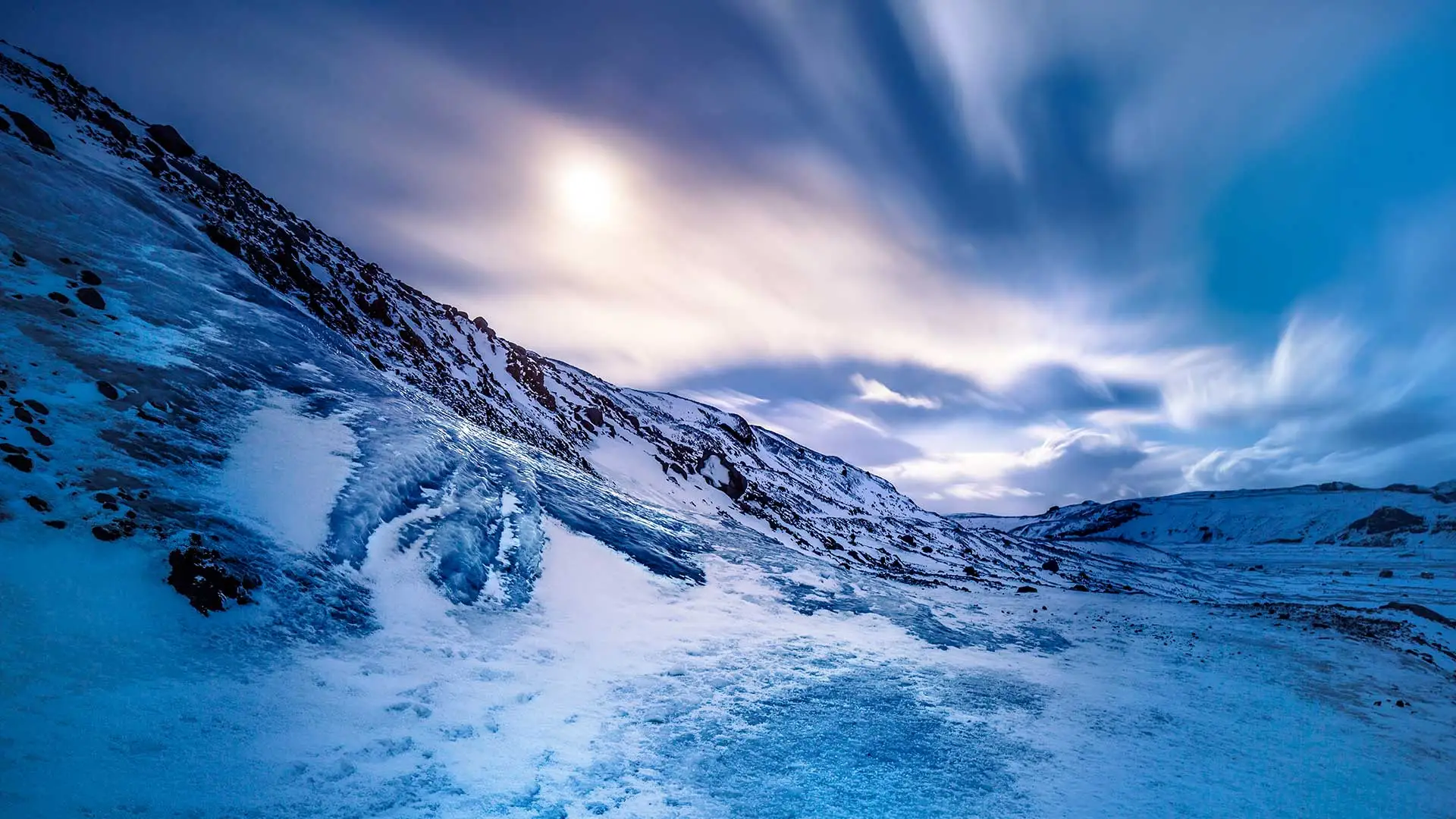Iceland is known for its wildly unpredictable and ever-changing weather. Each month brings something new – from frigid winter storms to extended summer days bathed in ethereal light. Read on below for an in-depth guide covering Iceland’s weather on a month-by-month basis.
1. Spring
Iceland “springs” to life in more ways than one from March to May. Temperatures tick upward each month, snow begins melting, days rapidly lengthen, and dormant flora awakens. The Iceland weather by month is highly unpredictable, even during the warmer months. You might have a lovely sunny day where you can wear shorts and T-shirts, but rain or snow can change anytime. Therefore, you must pack many layers, including a waterproof jacket and shoes.
April showers help wash away the last of winter’s snow. Spring comes into full bloom – at least by Icelandic standards. Daffodils poke through the soil and a few tree species don their first leaves. Average temperatures make impressive gains, climbing to highs near 6°C (43°F) in Reykjavik and above freezing lows of 1°C (34°F). Rain is frequent on Iceland’s southern coast, though the north stays predominantly cold and dry. Days include over 14 hours of sunlight.
2. Summer
Iceland endures nearly endless daylight from June to early August. Summer temperatures peak, though cooler weather is never too far off. June is famous for the midnight sun. Reykjavik receives 21 hours of daylight around the summer solstice – with civil twilight lasting all night. Temperatures are refreshingly mild, averaging daily highs near 12°C (54°F) and lows around 6°C (43°F).
Rain is more scattered with spells of clear skies. Northern light sightings aren’t impossible as darker hours reappear come August. Visitors descend on Iceland to celebrate the arrival of summer. July continues the trend of long, sunny days plus relatively comfortable temperatures. With 19 hours of sunshine, Reykjavik still sees some astronomical darkness for possible northern lights viewing. Average temperatures hold steady from June, topping out around 13°C (55°F) in the afternoon and bottoming out around 7°C (45°F) predawn.
While one of Iceland’s warmest months, August tends to be wetter as fall encroaches. Reykjavik still claims 16 hours of daily sunlight early on before losing nearly 3 hours by month’s end. Average high temperatures reach 13°C (55°F) while lows hover around 8°C (46°F).
3. Fall
Autumn weather patterns take over Iceland between September and November. The tourist masses dissipate as temperatures drop and daylight wanes rapidly ahead of winter’s entrance. September maintains relatively mild temperatures but hosts noticeably shorter days. Reykjavik still claims 12 hours of sunlight early on before dwindling below 10 hours come September 30. Average high temperatures descend to 10°C (50°F) while lows average 6°C (43°F).
Coastal rain showers are common, potentially mixing with high-elevation snowflakes by month’s end. Packing layers is crucial as Iceland bids farewell to summer by shuttering many seasonal attractions. October makes it clear that winter’s return is imminent. Day length in Reykjavik decreases sharply to less than 9 daylight hours. Temperatures likewise plummet as highs reach just 6°C (43°F) and lows sit around 2°C (36°F).
Multiple storm systems march through, bringing everything from powerful wind gusts to driving rain and wet snow. Iceland’s barren interior highlands become largely inaccessible until next summer. Iceland bids goodbye to autumn in freezing fashion. November continues the temperature-free fall as Reykjavik highs barely get above 4°C (39°F) and lows average a frigid 0°C (32°F). Gloomy, damp weather predominates between bouts of snow and mixed precipitation.
4. Winter
Winter in Iceland is long, dark, and cold. Fierce North Atlantic storms bring everything from freezing rain to heavy snowfall visiting Iceland from late October through April. December marks the start of winter in Iceland. Average highs hover right around freezing – topping out at 1°C (34°F) – while average lows sit frigidly at -3°C (27°F). Reykjavik sees rain nearly 50% of the days in December. Snow accumulations start to pile up, especially as the month wears on. Daylight is in short supply, with the sun rising at 11 AM and setting shortly after 3 PM around the winter solstice.
January is typically Iceland’s coldest and darkest month. Daily high temperatures in Reykjavik average just above freezing at 1°C (34°F), while nightly lows average a bitter -2°C (29°F). January also brings the year’s shortest days – Reykjavik sees only about 4 hours of daylight in early January.
Conclusion
There’s no question that Iceland boasts one of the world’s most remarkable geographies and climates. Each month provides vastly different conditions and potential activities across this volcanic Nordic island. While the weather changes fast and frequently – sometimes vexingly so – Iceland’s awe-inspiring natural canvas makes braving the elements well worth it. Just come prepared! We hope this comprehensive month-by-month breakdown gives you keen insight into properly packing and traveling during your preferred season.
Read More: The Connection Between Weather and Allergy Sufferers
